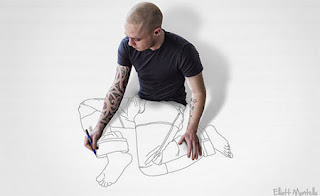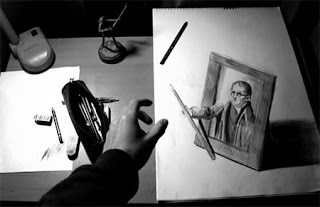WHO BECOMES A DESIGNER?
There are probably as many kinds of designers as there are kinds of design, so how do you know whether a career in design might be right for you? First, you might take a look at the clusters of characteristics often shared by designers and see if you find yourself reflected there. Begin with the three most common traits designers share: interest in the visual world, curiosity about communication in all its forms and creativity.
Designers tend to be skilled “lookers.” They take in the world both visually and conceptually. They scrutinize color and texture, they look at relationships between things and they find the repetition and rhythm in what they see. Conceptually, designers look at an idea from all sides, searching for an approach with a twist-one that goes beyond the ordinary. These habits of the eye and mind feed their creativity. For designers, the world of objects and ideas becomes an immense playground from which they emerge with fresh ideas and images.
I am an information architect. Architect in my definition doesn't mean style but a kind of rigor in thinking. Information means understanding-and my only passion is to make things that interest me understandable. -Richard Saul Wurman
My early studio exposure to a design studio made me aware of the design profession as an opportunity to apply analytical abilities to an interest in the fine arts. Graduate design programs made it possible for me to delve more deeply into the aspects of design I found personally interesting. Since then, the nature of the design profession, which constantly draws the designer into a wide range of subjects and problems, has continued to interest me in each new project. It's been this opportunity to satisfy personal interests while earning a living that has made design my long-term career choice. -Won Chung
I need to make things that connect in a meaningful, useful, evocative way to others, and I like to indulge in the sensuousness of the material world. I learned that I could use design not only to reach into myself and express my own feelings, but also to reach out to others with images and words that are well researched and thought out, condensed and transformed into a communication that could involve everyday folks in our shared public environment. -Sheila Levrant de Bretteville
I like the way words look, the way ideas can become things. I like the social, activist, practical and aesthetic aspect of design. -Laurie Haycock Makela
When I was a child I was obsessed with drawing. At the age of six, when I was confined to a bed for a year as a result of a childhood illness, I found that the only things that kept me busy were building cities out of clay and drawing. Obviously, the urge toward form-making was an important part of my makeup. -Milton Glaser
As a reflection of their creativity, designers often have an abundance of curiosity. They ask questions, delight in playing the devil's advocate and are often reluctant to accept someone else's habits or customs. Some say they are “off-center”-more self-directed than they are controlled by society or others. Designers also have intellectual curiosity: they want to understand how communication works, and they are not timid about trying out their ideas on their family and friends. They are interested in the visual interpretation of abstract ideas. They draw, they read, they experiment, they make things. They explore culture by participating in it, not only by doing things but also by observing the creative work of others, including attending concerts, seeing films, or just paying attention to life as it goes by. They soak up sensory experience and ideas.
Making things is second nature for designers. Somehow thinking something or saying something just isn't enough. Designers sense intuitively that the process of making something real engages the mind in a different and powerful way: forms and colors change; new ideas emerge. They like projects with definite beginnings, middles and endings because these kinds of projects are tied to development and achievements. Generally, designers dislike routine or maintenance activities. Starting something new and unknown challenges them.
Designers are attracted to things that perform a definite function-things that are useful and beautiful. They are interested in improving everyday life rather than creating art for museums. To designers, the limitations of design and communication are seen as challenges rather than as straightjackets.
As you have seen, there really is no exact, ideal, universal designer type. General characteristics-including creativity, openness to new ideas and a desire to explore the visual world-are more important than specific traits or qualities. Coming from a variety of backgrounds, from all ethnic groups and from locations as diverse as New York City, Great Plains States, Kansas and Tokyo, Japan, designers are different and seek to refine that difference as they appreciate the differences of others.
I became a graphic designer because my best skill, drawing, did not exercise the rest of my mind. -Colin Forbes
When I was growing up, I wanted to be an artist and an actress. This desire lasted until my second year of college, when I became attracted to design. I took my junior year at design school with the ideas of returning to my former college-but I never went back. My destiny was design. -Deborah Sussman

























